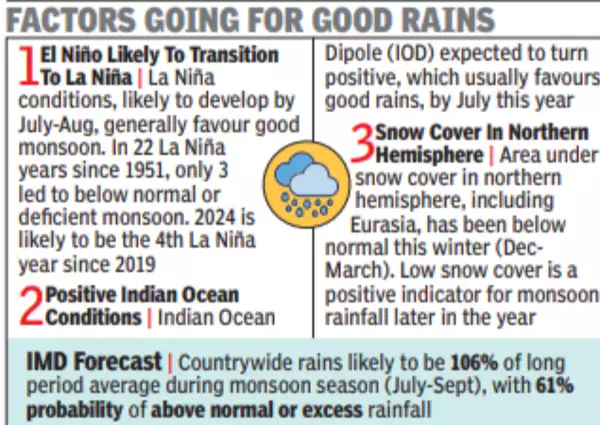The India Meteorological Department (IMD) has issued a bold forecast predicting a 6% surplus in monsoon rainfall from June to September, surpassing the average of 87 cm. This news comes amidst soaring temperatures in southern states, sparking anticipation for much-needed relief from the heatwaves. However, the forecast also raises concerns about the potential risks associated with excessive rainfall.
IMD’s climate models indicate a 30% chance of “excess” rains, defined as more than 10% above the normal rainfall. Additionally, there is a 31% expectation of “above normal” rains, suggesting a slim margin between excessive and above-average precipitation. Most of the anticipated rains are forecasted for August and September, driven by the development of La Niña conditions and a positive Indian Ocean Dipole.
While abundant rainfall may benefit agriculture, the IMD’s forecast also raises alarms about the risk of extreme floods and associated damage to lives, livelihoods, and infrastructure. The devastating 2018 floods in Kerala serve as a poignant reminder of India’s vulnerability to natural disasters, necessitating proactive measures from authorities and communities.
In response to the forecast, states are urged to implement emergency plans, bolster infrastructure, and conduct audits of dams and distress-signalling networks. Early-warning systems must be reinforced to mitigate the impact of potential floods. Furthermore, farmers, who heavily rely on rain-fed agriculture, should be informed about the forecast’s implications and adjust their sowing operations accordingly. With updates expected by the end of May, proactive measures are crucial to minimize the potential risks associated with the anticipated monsoon season.






